
®
SHIPSPOTTING.COM
WELCOME TO SHIPSPOTTING.COM
EVER LIBERAL - IMO 9604160
Photo
details
Photographer:lys [ View profile ]
Title:Ever Liberal
Photo Category:Containerships Built 2011-2020
Added:Feb 8, 2015
Views:3,563
Image Resolution:3,456 x 2,304
Description:
PORT NAKHODKA RUSSIA december 2014 AFTER HEAVY STORM.WAITING BETTER WEATHER.
Vessel
particulars
Current name:EVER LIBERAL
Current flag:United Kingdom
Home port:London
Callsign:2HDG2
IMO:9604160
MMSI:235102678
Status:In Service
Build year:2014
Class society:Lloyd's Shipping Register
Vessel Type:Container Ship
Gross tonnage:99,995 tons
Summer DWT:103,668 tons
Length:335 m
Beam:45.8 m
Draught:14 m
Photos:14 photos by 9 photographers
AIS Position
of this ship
Last known position:34°9’7.28” S, 25°54’16.34” E
Status:
Speed, course (heading):18.9kts, 82.3° (84°)
Destination:
- Location:Br Rio> Sg Sin Pwbga
- Arrival:2nd May 2024 / 00:00:29 UTC
Last update:5 days ago
Source:AIS (ShipXplorer)

Photo
Categories
This ship exists in the following categories:
Containerships built 2011-2020 - 14 photos
Photographers
of this ship
(9)
2 photos
2 photos
2 photos
1 photos
1 photos
1 photos
1 photos
3 photos
1 photos
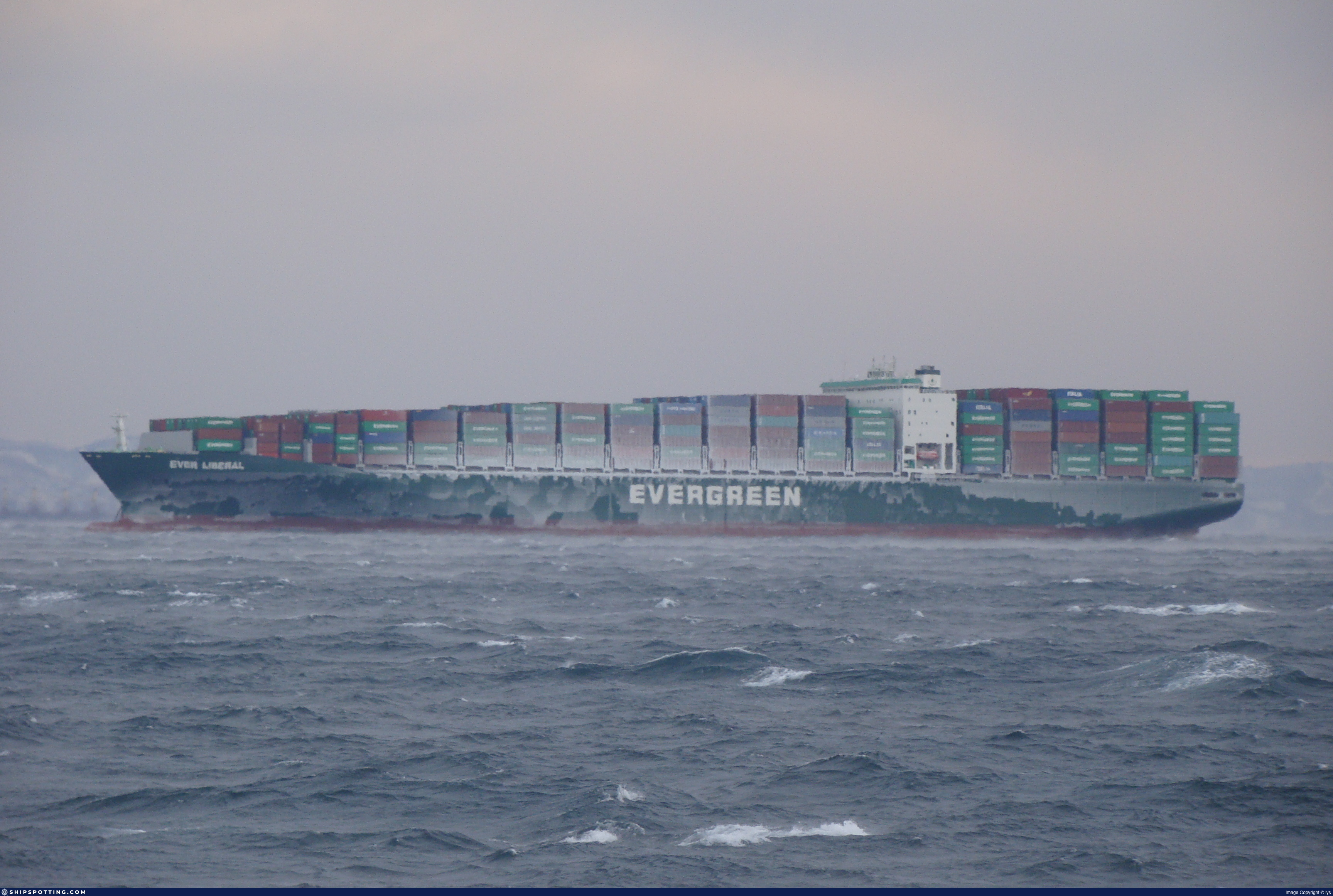

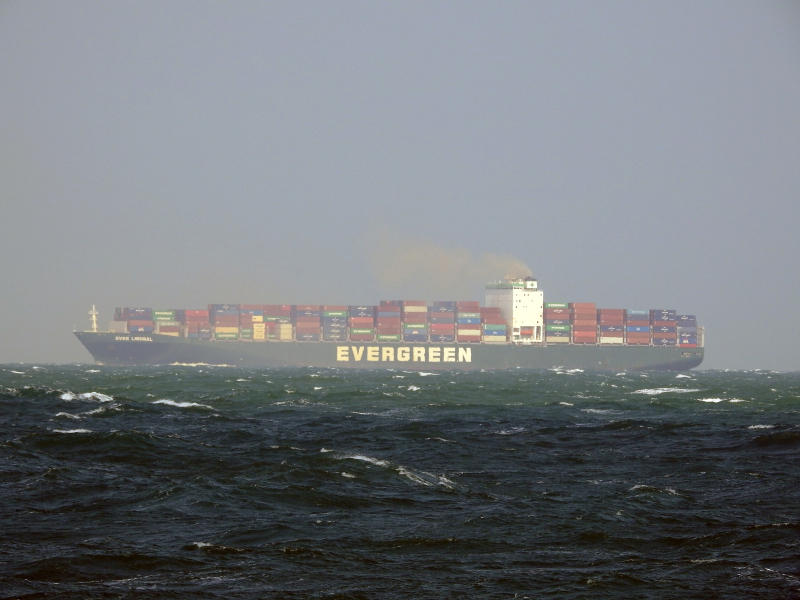
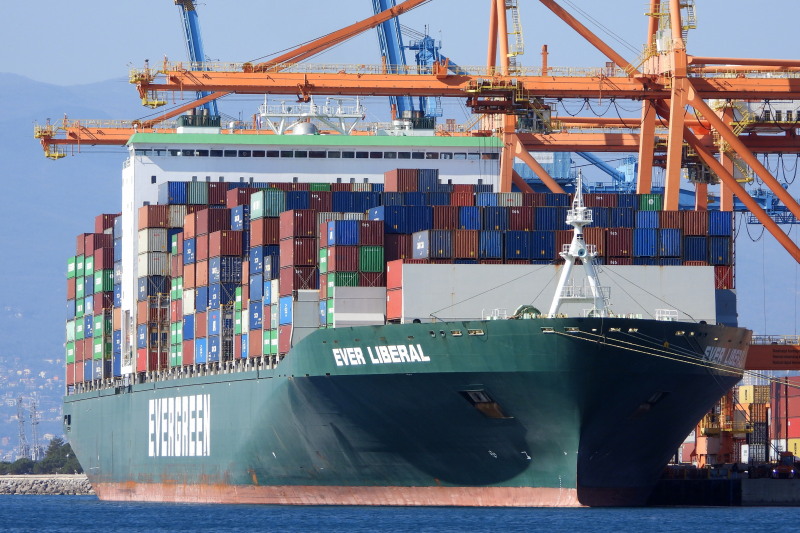

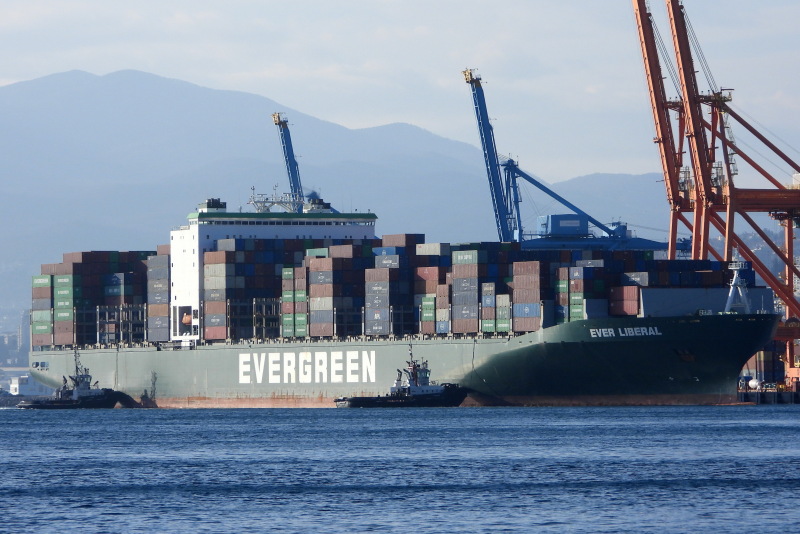
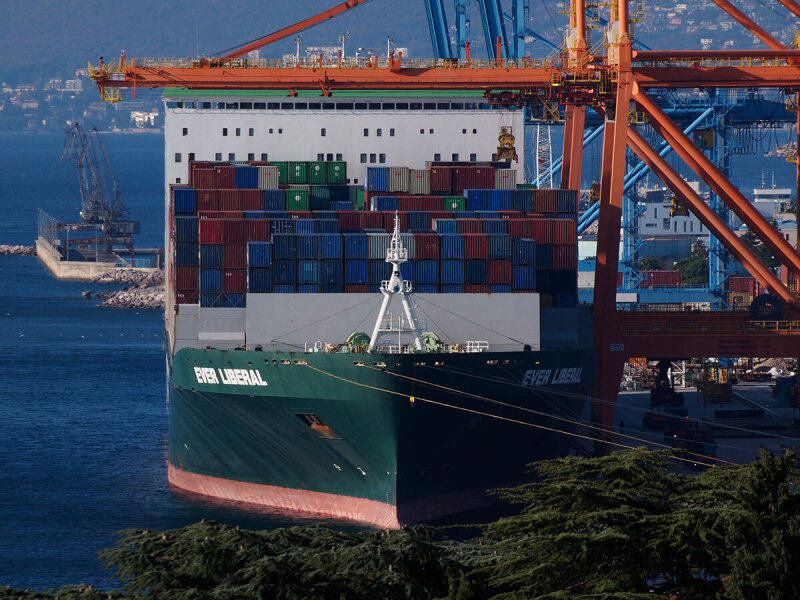
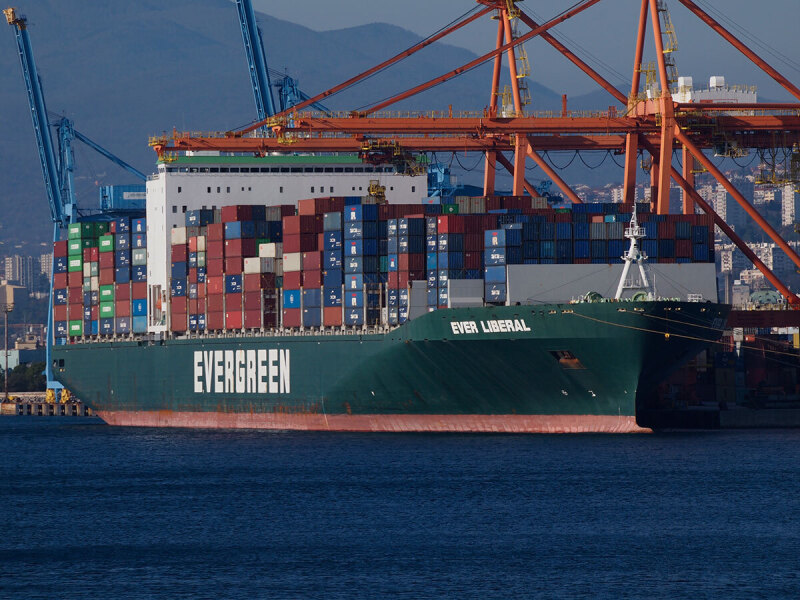
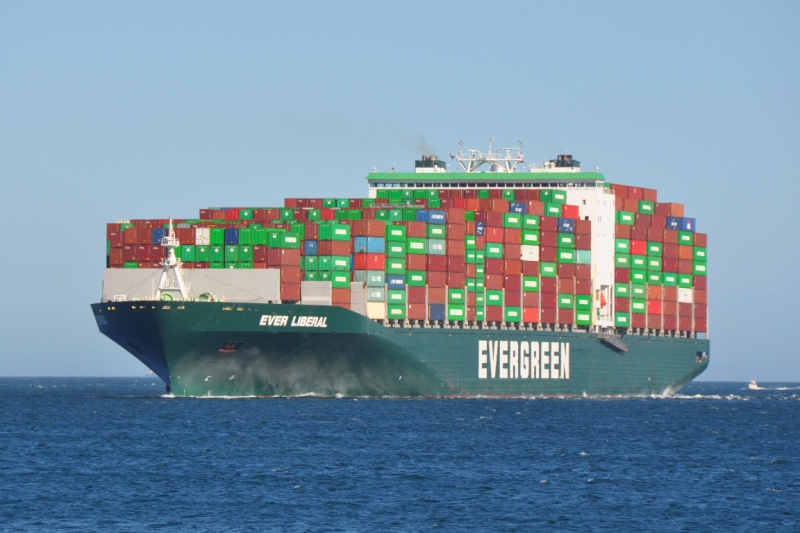
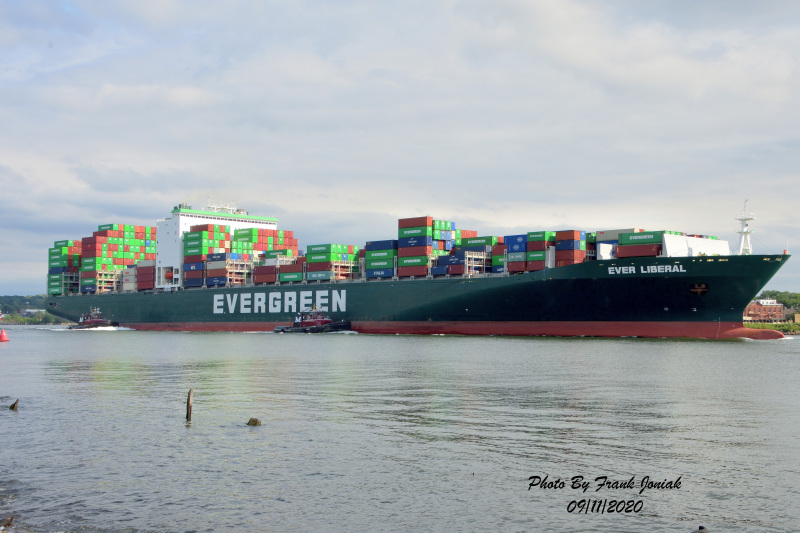


COMMENT THIS PHOTO(14)
Edit
comment
you are correct and I understand fully what you mean. I sailed the CSAV Santos/Libra Santa Catharina and other sisters of them from 2005-2007 also into R-dam,,bridge aft,,which eliminates that problem. But as pointed out correctly, there is seemingly no regulation on container heights behind the bridge and/or the sight requirements. I can not remember that I ever heard about it, somehow a little surprising to me, as you said it makes it sure not easy, for you as pilot or for as as Capt,s
Edit
comment
As you can see on this picture containers behind the accomodation are place higher than the wheelhouse.
By Evergreen ships the outer row is on the same level as the wheelhouse.
Edit
comment
This loading has nothing to do with streamlining, It has to be that way when the ship is full loaded with container. I reached max capacity with full containers
at rough 65% of max possible TEU capacity. Then you have usually 2-3 tiers on deck. This vessel has most probably heavy container under deck and in the first tier and above that empties (MT,s) otherwise she could ne reach full TEU capacity. As one can see she is not loaded to mark.
Ice is a real danger for such ships if loaded to max
stability criteria. (hence summer deadweight/winter/winter north atlantic etc ) where the latter permits the least draft in order to have a bigger safe margin on stability if ice builds up or also just plain waves on deck.
Below IMO regs copied in.
https://mcanet.mcga.gov.uk/public/c4/solas/solas_v/Regulations/regulation22.htm
1.
Ships of not less than 55 m in length, as defined in regulation 2.4, constructed on or after 1 July 1998, shall meet the following requirements:
1.1 The view of the sea surface from the conning position shall not be obscured by more than two ship lengths, or 500 m, whichever is the less, forward of the bow to 10° on either side under all conditions of draught, trim and deck cargo;
1.2 No blind sector caused by cargo, cargo gear or other obstructions outside of the wheelhouse forward of the beam which obstructs the view of the sea surface as seen from the conning position, shall exceed 10°. The total arc of blind sectors shall not exceed 20°. The clear sectors between blind sectors shall be at least 5°. However, in the view described in .1, each individual blind sector shall not exceed 5°;
1.3 The horizontal field of vision from the conning position shall extend over an arc of not less than 225°, that is from right ahead to not less than 22.5°, abaft the beam on either side of the ship;
1.4 From each bridge wing the horizontal field of vision shall extend over an arc at least 225°, that is from at least 45° on the opposite bow through right ahead and then from right ahead to right astern through 180° on the same side of the ship;
1.5 From the main steering position the horizontal field of vision shall extend over an arc from right ahead to at least 60° on each side of the ship;
1.6 The ship's side shall be visible from the bridge wing;
1.7 The height of the lower edge of the navigation bridge front windows above the bridge deck shall be kept as low as possible. In no case shall the lower edge present an obstruction to the forward view as described in this regulation;
1.8 The upper edge of the navigation bridge front windows shall allow a forward view of the horizon, for a person with a height of eye of 1,800 mm above the bridge deck at the conning position, when the ship is pitching in heavy seas. The Administration, if satisfied that a 1,800 mm height of eye is unreasonable and impractical, may allow reduction of the height of eye but not less than 1,600 mm;
1.9 Windows shall meet the following requirements:
1.9.1 To help avoid reflections, the bridge front windows shall be inclined from the vertical plane top out, at an angle of not less than 10° and not more than 25°.
1.9.2 Framing between navigation bridge windows shall be kept to a minimum and not be installed immediately forward of any work station.
1.9.3 Polarised and tinted windows shall not be fitted.
1.9.4 A clear view through at least two of the navigation bridge front windows and, depending on the bridge configuration, an additional number of clear-view windows shall be provided at all times, regardless of weather conditions.
Edit
comment
Edit
comment
Certain canals and ports have stricter rules (eg Panama canal).
Edit
comment
for safe navigation the cargo, in this case the Containers, must be so stowed that the navigation officers are able to see the foremast or the steering light at least. This is from great importance, in the case the ship has to navigate in narrow waters such a river or a canal (Elbe or suez Canal as example)to make sure that also by sight the navigation officer is ablt to make sure there the vessel is heading or the bow is moving in the right direction at change of course. If the containers are stored like in the front of the wheelhouse this possibility is not given.
A reason for change of the wheelhouse to the fore part is also that the Containers are able to be stored always as high as possible without loose of to much capacity.
This is a simple explanation, I am sure you will get this answer more complicated as well.
best regards
capesize
Edit
comment
Edit
comment
Rgds Craig
Edit
comment
Edit
comment
looks like aero-dynamics at work !
If this is the norm, I cant say i have ever seen it before
Edit
comment
Edit
comment
Regards Peter
Edit
comment
Edit
comment